- News
- Reviews
- Bikes
- Components
- Bar tape & grips
- Bottom brackets
- Brake & gear cables
- Brake & STI levers
- Brake pads & spares
- Brakes
- Cassettes & freewheels
- Chains
- Chainsets & chainrings
- Derailleurs - front
- Derailleurs - rear
- Forks
- Gear levers & shifters
- Groupsets
- Handlebars & extensions
- Headsets
- Hubs
- Inner tubes
- Pedals
- Quick releases & skewers
- Saddles
- Seatposts
- Stems
- Wheels
- Tyres
- Tubeless valves
- Accessories
- Accessories - misc
- Computer mounts
- Bags
- Bar ends
- Bike bags & cases
- Bottle cages
- Bottles
- Cameras
- Car racks
- Child seats
- Computers
- Glasses
- GPS units
- Helmets
- Lights - front
- Lights - rear
- Lights - sets
- Locks
- Mirrors
- Mudguards
- Racks
- Pumps & CO2 inflators
- Puncture kits
- Reflectives
- Smart watches
- Stands and racks
- Trailers
- Clothing
- Health, fitness and nutrition
- Tools and workshop
- Miscellaneous
- Buyers Guides
- Features
- Forum
- Recommends
- Podcast
BUYER'S GUIDE
 Your guide to 2021 Continental tyres for road and gravel bikes DEc 2021
Your guide to 2021 Continental tyres for road and gravel bikes DEc 2021Your guide to 2021 Continental tyres for road and gravel bikes
Continental tyres are one of the most recognisable and trusted groups of products in the cycling world. If you’re in the market for new road bike tyres, Continental tyres includes a wide range of choices to meet different requirements and price points.
The 2021 Continental tyre range for road bikes and gravel bikes
- Tubeless tyres
- Clincher tyres
- Continental Grand Prix 5000 — £33.30
- Continental Grand Prix Supersonic — £54.95
- Continental Attack and Force III — £81.99/pr
- Continental Grand Prix 4 Season — £47.95
- Continental Grand Prix GT — £34.99
- Continental Grand Prix — £25.60
- Continental Grand Prix Classic — £24.95
- Continental Gator Hardshell — £17.99 - £37.04
- Continental Gatorskin — £28.99 - £39.95
- Continental Grand Sport Race — £19.49
- Continental Ultra Sport III — £21.99 (folding)
- Continental Supersport Plus — £21.99
- Tubular tyres
- Continental Tempo II — £94.95
- Continental Sonderklasse II — £84.99
- Continental Attack Comp (£66.99) and Force Comp (£64.79)
- Continental Competition — £65
- Continental Grand Prix 4000S II Tubular — £75.00
- Continental Sprinter — £36.99 - £39.99
- Continental Olympic II — £299.95
- Continental Podium TT — £66.99
- Continental Giro — £21.30
Continental tyres are organised into winter/training/commute, sportive, race/triathlon and time trial/sprint tri categories, but there’s a lot of overlap in the range, as you can see from the graphic below. It’s a good place to start if you’re not sure which tyre is right for you. It also handily groups the tyres by price, with premium, performance and sport.
Read more: Trend spotting: Why you need to switch to wider tyres
Tubeless tyres
Life moves pretty fast. No sooner had we got used to the idea that Continental had — finally! — made a tubeless version of their flagship tyre than they one-upped themselves with a lighter, allegedly faster version of it, the Continental Grand Prix 5000 S TR. Let's kick off with a look at the new rubber.
Continental Grand Prix 5000 S TR — £46.90
There are so many significant differences between the Grand Prix 5000 S TR and its TL predecessor that Continental could easily have designated the new version Grand Prix 6000. The headline changes are:
- Sealant required. The GP 5000 TL has a layer of rubber on the inside to retain air; the GP 5000 S TR doesn't.
- Two-ply casing under the tread rather than three-ply.
- Reduced weight thanks to the above two changes.
- Compatible with hookless rims.
- Easier mounting and sealing.
The GP 5000 S TR retains the Black Chilli tread rubber and Vectran anti-puncture strip of the previous version and depending whose tests you believe is very slightly slower or very slightly faster than the TL in terms of rolling resistance.
While the GP TL was better than many previous tubeless tyres for ease of fitting, there were still rims it didn't quite fit easily. We've found the GP S TR is better still, but you might still run into not-quite-compatible combinations.
On the road tester Jamie found "they certainly feel fast and, just like the TLs, grippy in both dry and wet conditions. In theory, the TR should be more supple than the outgoing TL tyre, but more rigid than the non-tubeless version which gets three plies of 110tpi. In practice, they're lovely tyres to ride. Unlike some of the first tubeless tyres to hit the market, these don't feel stiff, and in back-to-back tests I preferred the ride on these to the Goodyear Eagle F1 Tubeless. I still don't think they're as quite as supple as my favourite race day tyres, the Vittoria Corsa Speed TLR, but neither are they quite as fragile, and are still in the upper echelons of the many tyres I've used."
Read our review of the Continental GP5000 S TR
Continental Terra Trail — £40.50
The more off-road-specific of the two Continental gravel tyres, the 40mm-wide Terra Trail is available in 650B (440g) and 700C (460g). The tread pattern has smaller centre section knobs with larger shoulder knobs that Continental says is designed to be used across a multitude of terrains, from tarmac, gravel, muddy trails and other surfaces.
Continental Terra Speed — £40.10
The lighter-treaded Terra Speed is available in 35mm and 40mm widths, in both 700C and 650B wheel sizes. Claimed weights are:
650B 35mm: 390g
650B 40mm: 400g
700C 35mm: 400g
700C 40mm: 420g
Continental says the lighter tread of the Terra Speed reduces the rolling resistance compared to the Terra Trail, and recommends it for rides and races in dry, dusty and loose conditions.
For 2021 Conti has introduced a version of the Terra Speed with trendy tan sidewalls.
Continental Grand Prix 5000 TL — £54.99
At the end of 2018 the big news in Continental tyres was the introduction of a successor to the Grand Prix 4000 S II, unsurprisingly named the Grand Prix 5000. Not only did Continental replace arguably the most successful clincher tyre of all time, but they finally produced a tubeless version.
It's still available from some retailers but the Grand Prix 5000 TL has been nominally replaced by the Grand Prix 5000 S TR. We'll keep these details until retailers run out.
The tubeless GP 5000 is available in 25, 28 and 32mm widths, plus a 28mm wide 650B version. Our samples of the 25mm versions weighed an average of 302g each; we've seen reliable reports of 295g samples too. That's heavier than some comparable tubeless-ready tyres (a 25mm Schwalbe Pro One weighs about 255g) because Continental has gone for a fully tubeless construction with an airtight rubber layer on the inside.
In theory that means sealant isn't required, but Continental recommend you use 30-60ml of sealant to protect against punctures. Everything else being equal that extra layer also means increased rolling resistance, but it seems everything else is far from equal. According to Jarno Bierman at bicyclerollingresistance.com, the tubeless GP 5000 has very low rolling resistance, second only to the Vittoria Corsa Speed Open TLR, which has thinner tread.
Continental's not saying exactly what wizardry of rubber formulations and carcass construction has been wrought to achieve this, but it's impressive as hell, especially when you consider that the improvement over the clincher version of the GP 5000 is 17% — Conti only claims 5% — and the tubeless GP 5000 therefore has over 30% less rolling resistance than the GP 4000 S II. That makes it the fastest Continental tyre yet.
Tubeless standards and compatibility are still in a state of flux, so some tyres and rims go together more easily than others. Continental says it did extensive testing on a wide range of rims to ensure the GP 5000 works as well as can be possibly expected, and our testing so far confirms they've got it right at least as far as Mavic wheels are concerned. Jump to the eight-minute mark in Dave Arthur's installation video and you can see that a GP 5000 goes up on a Mavic wheel with just a track pump.
All in all, the Grand Prix 5000 Tubeless is an extremely impressive tubeless debut.
Clincher tyres
Continental's clinchers are extremely popular, both with riders who choose them for their own bikes, and with bike manufacturers who spec them from entry-level bikes right up to superbikes with hefty four-figure price tags.
Continental Grand Prix 5000 — £33.30
Continental's headline claims for the new Grand Prix 5000: 12% better rolling resistance than the GP4000S II, 20% increased puncture resistance, improved grip and comfort, and 10g less weight for the 25mm version. In addition, Continental says the Black Chilli tread compound has been refined to improve its balance of rolling resistance and grip, the Vectran anti-puncture strip under the tread has been tweaked and the new tyre comes in a 32mm version as well as the 23, 25, 28mm widths of the GP 4000, and 25mm and 28mm widths in 650B.
The GP5000 boasts two new features: Lazer Grip texturing on the shoulder of the tread and Active Comfort Technology. Lazer Grip is a slight roughening of the tread intended to improve cornering grip, while Active Comfort is an elastomer embedded in the tyre to damp vibrations.
In Jarno Bierman's rolling resistance tests, the GP 5000 outperforms the GP 4000S II by almost 20%, so Continental's actually being modest in their claims there. Dave Arthur reports that they ride very similarly to the GP 4000S II.
Continental Grand Prix Supersonic — £54.95
The lightest Continental tyre at 150g in the 23mm clincher version, the Supersonic's smooth tread and very lightweight construction made it the fastest-rolling tyre in the stable until Continental kicked the chair out from under it with the GP 5000. There's no built-in puncture protection and tread wear is rapid because there's just not much tread there in the first place. This is a tyre to pair with the lightest inner tubes you can find for time trials and other short events. As Conti themselves say "Riders should weigh up the compromises that they are willing to take before selecting this tyre". Available in 20mm and 23mm widths.
Continental Attack and Force III — £81.99/pr
This pair of Continental tyres were designed for racing duties. They combine two different width tyres, a 22mm Attack on the front, and a wider 24mm Force on the back, which also utilises Vectran puncture protection for added toughness. You can buy them as a pair for £99.95 or individually for £54.95.
If you are restricted to narrower tyre sizes then the Continental Grand Prix Force and Attack III tyre set is still one of the best you can fit to your bike.
The Attack and Force are also available in a tubular version costing £129.95 for the pair and combines a 22mm front tyre with a 24mm rear tyre.
Read our review of the Continental Attack and Force III
Continental Grand Prix 4 Season — £47.95
If you want a slightly tougher and more durable tyre than the GP4000, the 4 Season is the Continental tyre for you. Conti has manufactured the tyre with two Vectran anti-puncture strips and added a DuraSkin anti-tear fabric to boost its toughness and longevity, it’s a tyre for conquering the cobbles and thanks to a Max Grip Silica compound, wet winter roads as well. It’s available in four widths from 23 up to 32mm making it a good all-rounder.
Continental Grand Prix GT — £34.99
The GT stands for Grand Tour, this is a tyre designed to survive UK sportives, but any long ride where you want reliability without sacrificing performance is where this Continental tyre shines. It combines the toughness of Conti's Gator Hardshell tyre and the performance of the GP5000's Black Chilli compound. There’s a wider PolyX Breaker to protect against punctures and extra sidewall thickness provides added reinforcement. It comes in just two 700c widths, 25 and 28mm, and a 26x1in option.
Continental Grand Prix — £25.60
The Grand Prix is the original fast Continental tyre, the one that spawned the GP4000 S II and then the GP5000, but Continental has kept it in the range and at £30 it’s one of the cheapest tyres to utilise the company’s Black Chilli rubber compound. It comes in 23, 25 and 28mm widths and is a good road race tyre. You'll sometimes see a Grand Prix SL listed as spec on bikes. Don't get too excited, this is just a Grand Prix with a silver label instead of yellow for bikes with more subdued colour schemes.
Continental Grand Prix Classic — £24.95
Based on the Grand Prix but given a brown sidewall and retro label, this is the Continental tyre to choose for a retro build. The tread pattern has actually been taken from a tyre Continental produced back in 1982 but still features the latest Black Chill compound and PolyX Breaker for avoiding flats.
Read more: How to choose your tyre pressure
Continental Gator Hardshell — £17.99 - £37.04
If you want a supremely tough tyre for commuting and city riding, the Gator Hardshell is a Continental tyre with plenty of protection. It uses a three-ply casing with an extra layer of Polyamide protection, a wider PolyX anti-puncture belt under the tread and down the sidewall, and a Duraskin anti-tear mesh on the outside of the casing, all to produce a tyre that can withstand the rigours of daily commuting. Available in widths from 23mm to 32mm and choice of rigid or folding bead, the latter being the lighter, but more costly, option.
Continental Gatorskin — £28.99 - £39.95
A popular training tyre, the Gatorskin is designed to be a reliable and hard-wearing tyre for going the distance and preventing punctures. It’s made with a Duraskin cut-resistant layer that stretches from bead to bead, features a PolyX Breaker for stopping thorns and glasses cutting through the carcass, and uses a natural rubber tread. A full range of width options from 23mm up to 32mm is available, with folding slightly cheaper rigid bead versions.
Continental Grand Sport Race — £19.49
The first of the performance line of Continental tyres, the Grand Sport Race swaps the expensive Black Chilli compound for a newer PureGrip compound that the company developed to keep the price more reasonable, and at £30 RRP it’s an attractive price. It uses a folding bead to keep the weight down, and new NyTech puncture belt and comes in 23 to 32mm width options. It’s also available in three versions using different casing builds, Light, Race and Extra, aimed at competition, sportives and heavy duty use respectively.
"They roll well too, to the extent that it's possible to judge such things without a lab available. I don't know that they'd be my first choice for racing, but they wouldn't really hold you back much if you did decide to press them into such service, and for general road riding or commuting they are just fine. I used them on the club chaingang as racing didn't really happen for me this year, and I had no complaints in terms of speed," said Jez Ash in his review. You can read the review here.
Continental Ultra Sport III — £21.99 (folding)
The latest version of the Ultra Sport appears to be almost identical to the Ultra Sport II but for a new tread pattern and a tick in the box marked 'Suitable for standard e-bikes'. Like version II, then, it uses Continental’s PureGrip compound and a 180 TPI (threads per inch) casing. It’s available in 23, 25, 28 and 32mm widths and rigid and folding beads.
Like its predecessor, the Ultra Sport III remains a bit of a bargain, with decent performance at a very low price.
Continental Supersport Plus — £21.99
This is a tyre designed to be tough enough for the most demanding commuters, bicycle messengers and fixie riders. It uses the same tread pattern as the more expensive Grand Prix tyre with a thick elastomer belt under the tread to provide a high level of puncture protection, and a robust casing with added sidewall durability. Built to survive anything, it comes in 23, 25, 28mm, 27 x 1 1/8in and 27 x 1 1/4in widths with rigid or folding beads.
Tubular tyres
So far we’ve focused on clincher tyres as that’s the most popular choice with road.cc readers, but Continental produces a raft of tubular tyres, tyres that glue directly onto the rim.
Continental Tempo II — £94.95
Weighing just 200g, this track tubular has a very fine Nylon carcass and, like all Conti's tubulars except the budget Giro, is made in Germany. Amusingly, Conti says that while it's intended for velodrome use only, the Tempo II is "'misused' for mountain stages and time trials".
Continental Sonderklasse II — £84.99
A bit beefier than the Tempo II, this is a track tubular specifically for longer track events such as European Six-Day events.
Continental Attack Comp (£66.99) and Force Comp (£64.79)
The Attack and Force employ the same basic idea of a narrower front tyre and wider more reinforced rear tyre as the clincher version of the same name but step down to 22mm at the front and 24mm at the rear.
Continental Competition — £65
Continental tyres are one of the most popular choices in the professional peloton, and while the pros get the special Pro Ltd version, this is essentially the tyre that has been riding to multiple race victories, including the 2016 Tour de France at the hands of Chris Froome. Handmade in Germany with a Black Chilli compound and four layers of puncture protection, and available in 19, 22 and 25mm widths, these are race-ready tyres.
Continental lists a TT version of the Competition with a latex inner tube, but these don't seem to be available yet.
Continental Grand Prix 4000S II Tubular — £75.00
The tubular version of the popular GP4000 clincher, on which this tyre is actually modelled with the same Black Chill tread compound and Vectran puncture protection. Is only sold in 22mm width, though.
Continental Sprinter — £36.99 - £39.99
A tyre designed solely for short road races and criteriums, the Sprinter uses a nylon puncture protection breaker and is handmade in Germany using the German company’s Black Chilli compound with an additional nylon ‘safety system’ puncture belt.
Continental Sprinter Gatorskin — £42.49 - £51.99
As the name suggests this is the tubular version of the popular Gatorskin tyre, combining the low weight of a tubular with the puncture-resistance of a winter training tyre.
Continental Olympic II — £299.95
The most expensive in the Continental tyre range, this is one for the velodrome and represents the company’s pinnacle of hand sewn tubular tyres. Features the same Black Chilli compound as the road focused tyres but a 220 TPI carcass with two aramid plies provides a recommended inflation of 170psi.
Continental Podium TT — £66.99
A tubular tyre designed for time trial events, hence the name, this one is favoured by some of the top professional cycling teams. It’s a 19mm width to maximise aerodynamic efficiency and the 0.7mm tread rubber minimises weight, yet Continental is confident the tyre will last a full British club time trial programme. Available in 19, 22 and 25mm widths.
Continental Giro — £21.30
This is the most affordable tubular in the Continental tyre range. It’s intended for training rides rather than competition events, and the cost is kept down because it’s made in Asia rather than Germany.
From Mat Brett's 2010 review: "There aren’t too many tubulars out there that are cheaper than the Continental Giro. Sure, you can find some, but this is certainly at the budget end of the market and it’s billed as an ‘inexpensive training tubular’. Bear that in mind and don’t go expecting a top level racing performance. But as an off-season run-around, it’s fine."
About road.cc Buyer's Guides
The aim of road.cc buyer's guides is to give you the most, authoritative, objective and up-to-date buying advice. We continuously update and republish our guides, checking prices, availability and looking for the best deals.
Our guides include links to websites where you can buy the featured products. Like most sites we make a small amount of money if you buy something after clicking on one of those links. We want you to be happy with what you buy, so we only include a product if we think it's one of the best of its kind.
As far as possible that means recommending equipment that we have actually reviewed, but we also include products that are popular, highly-regarded benchmarks in their categories.
Here's some more information on how road.cc makes money.
You can also find further guides on our sister sites off.road.cc and ebiketips.
road.cc buyer's guides are maintained by the road.cc tech team. Email us with comments, corrections or queries.
David worked on the road.cc tech team from 2012-2020. Previously he was editor of Bikemagic.com and before that staff writer at RCUK. He's a seasoned cyclist of all disciplines, from road to mountain biking, touring to cyclo-cross, he only wishes he had time to ride them all. He's mildly competitive, though he'll never admit it, and is a frequent road racer but is too lazy to do really well. He currently resides in the Cotswolds, and you can now find him over on his own YouTube channel David Arthur - Just Ride Bikes.
Latest Comments
- aramaerospace 26 min 11 sec ago
Increased drive friction and power loss:...
- Geoff H 2 hours 33 min ago
I was really enjoying the article until I came to the price!
- OldRidgeback 3 hours 26 min ago
I have a very old MTB (guess what make) that I'll happily leave locked at the train station or shops or whatever. The fairly new Trek MTB or...
- TheBillder 5 hours 58 sec ago
Dualling that stretch of the A7 will allow hard-pressed motorists to travel very slightly faster between the rock that is the Sherriffhall...
- BikingBud 5 hours 8 min ago
I refer to being an engineer only to emphasise my consideration of the logical approach that should be applied in the justice system, rather than...
- David9694 6 hours 39 min ago
Parking fail as car left teetering on top of stone wall Oh dear https://www.devonlive.com/news/local-news/parking-fail-car-left-teeterin...
- jaymack 7 hours 57 min ago
We must be related!
- The_Ewan 9 hours 27 min ago
But why worry if a few people do? It's just not a big deal....
- Tom_77 10 hours 31 min ago
Tempted to get him a sweary birthday cake like in The Thick Of It....
- Bigtwin 10 hours 59 min ago
Didn't happen did it? They came into my shop a couple of years back and said it was "on the way", but never heard anything more.
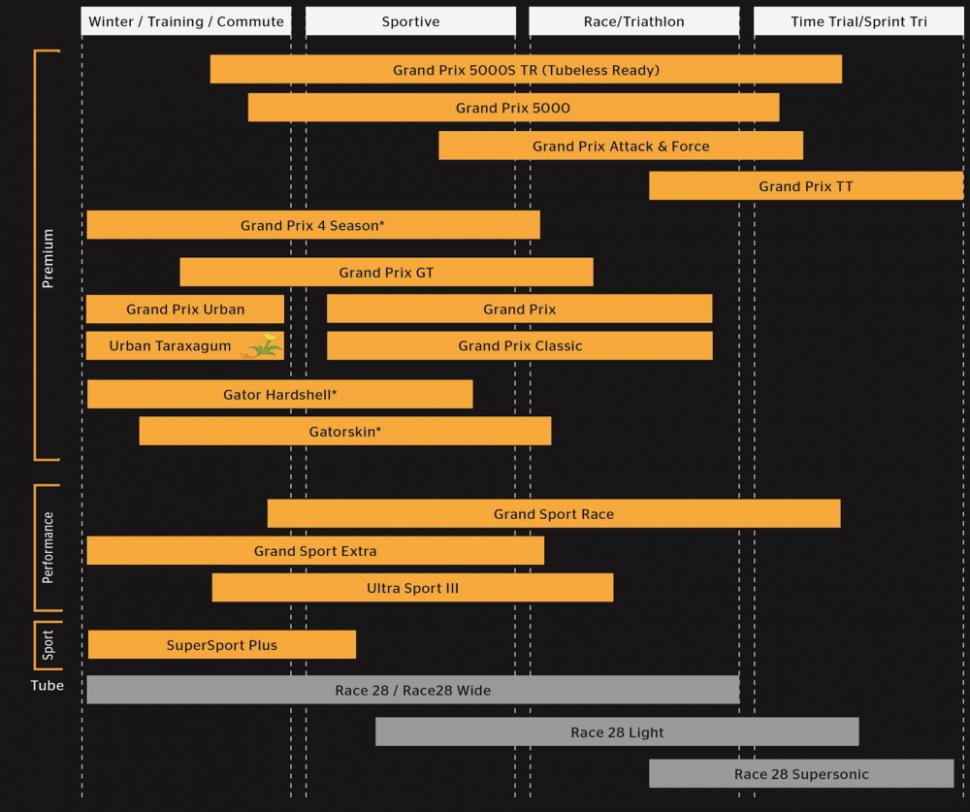
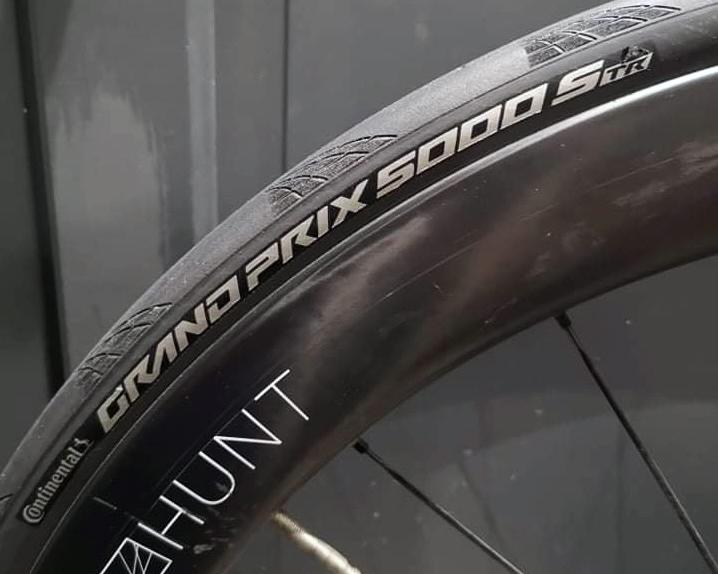
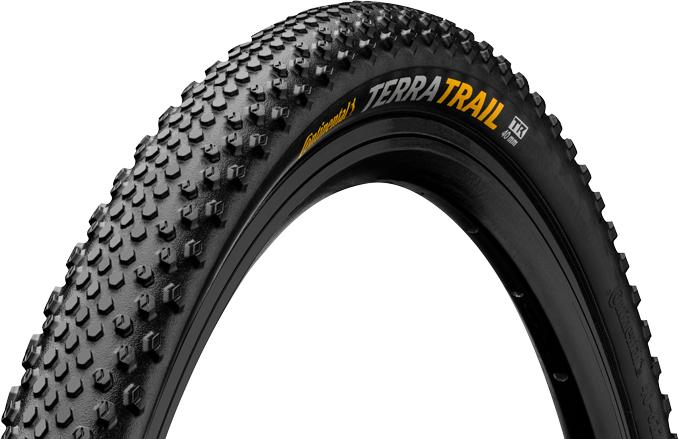
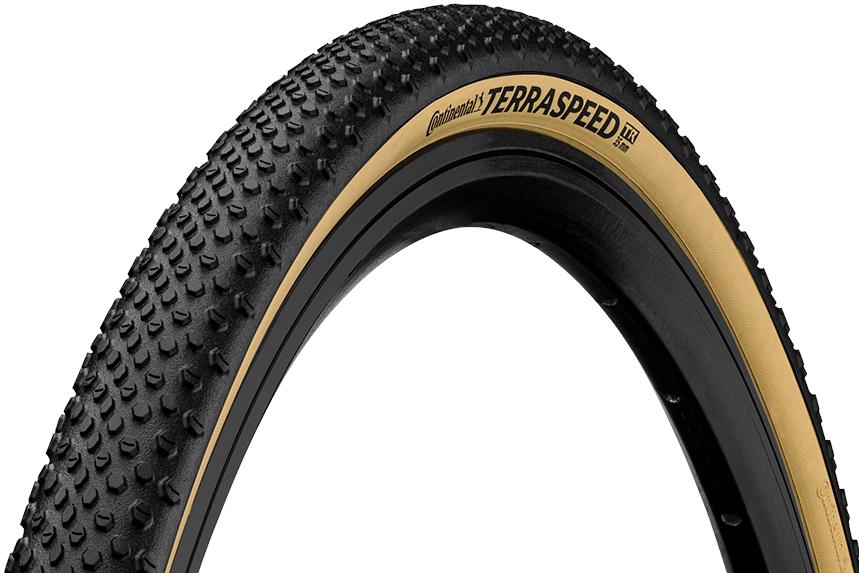
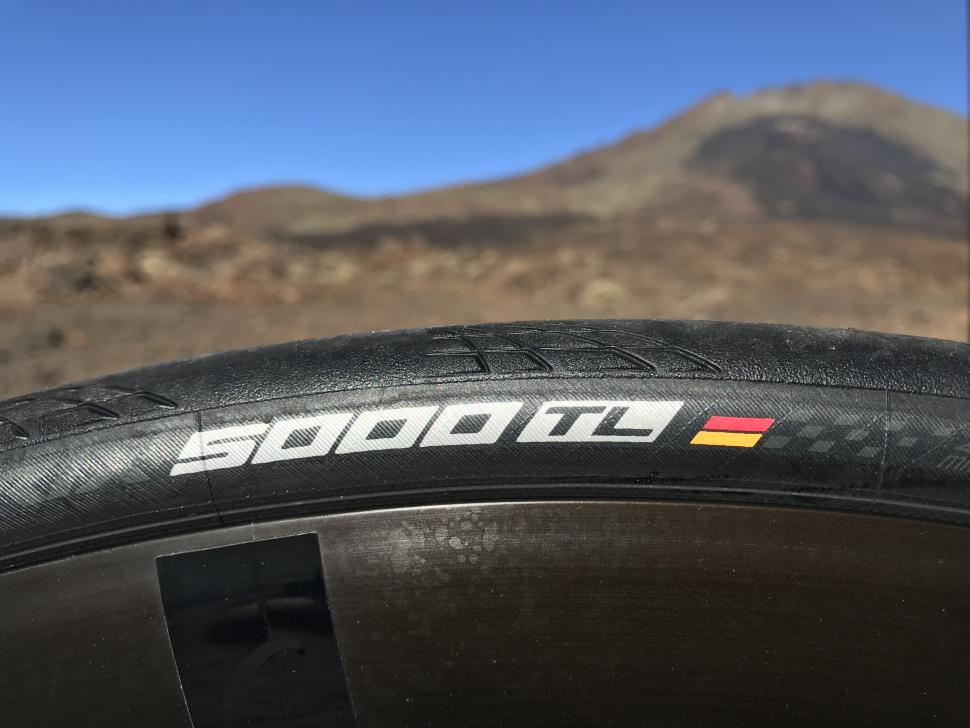
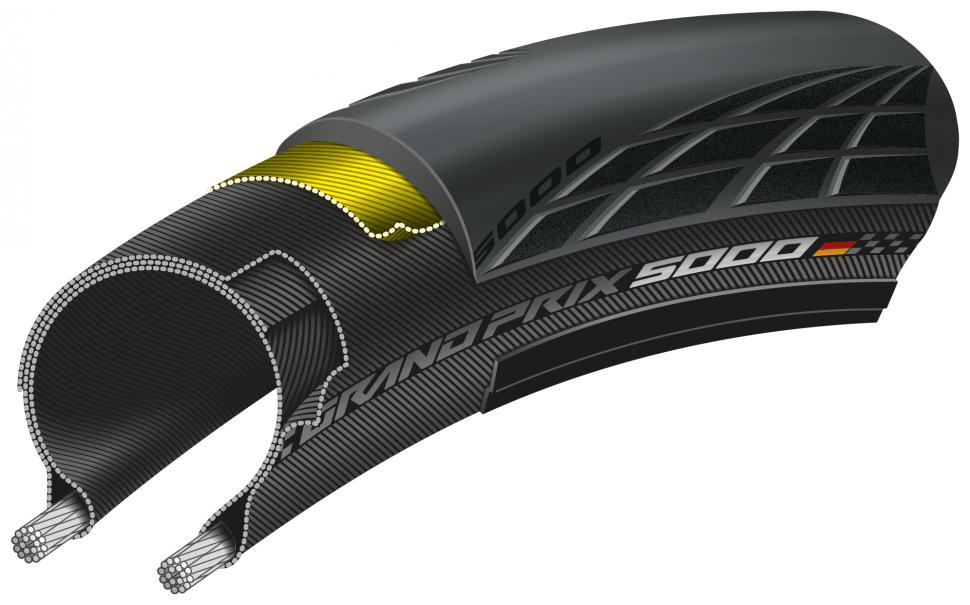
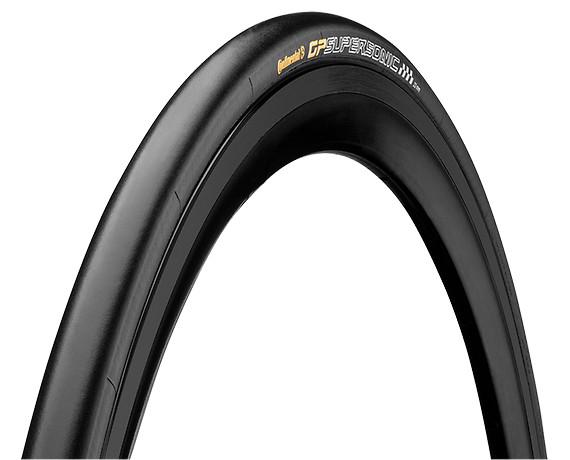
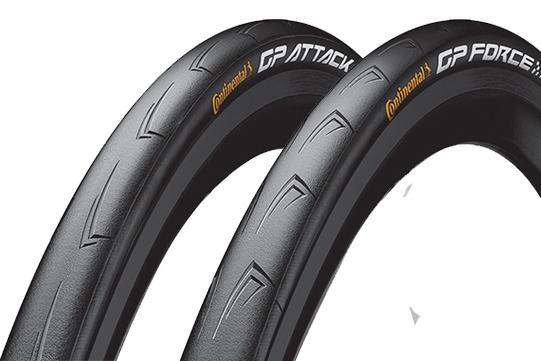
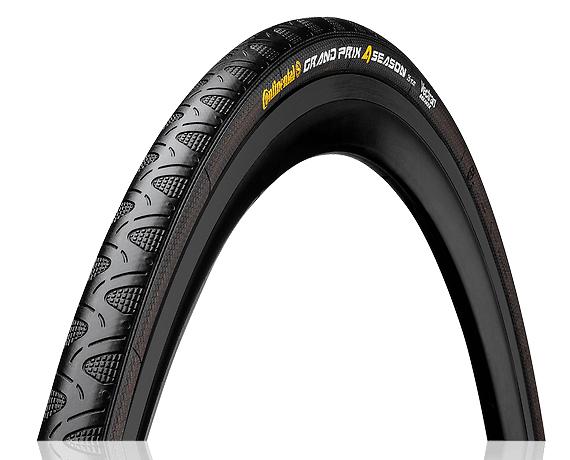
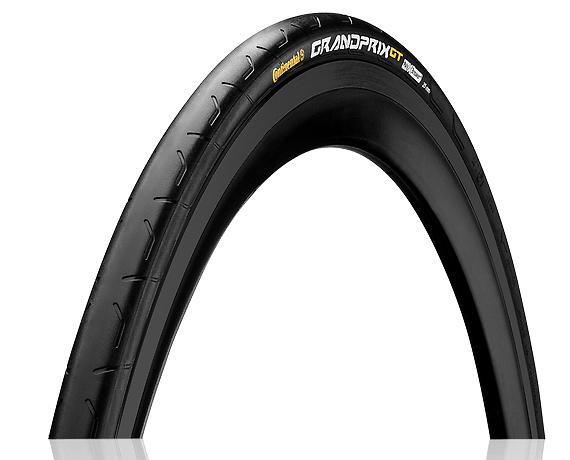
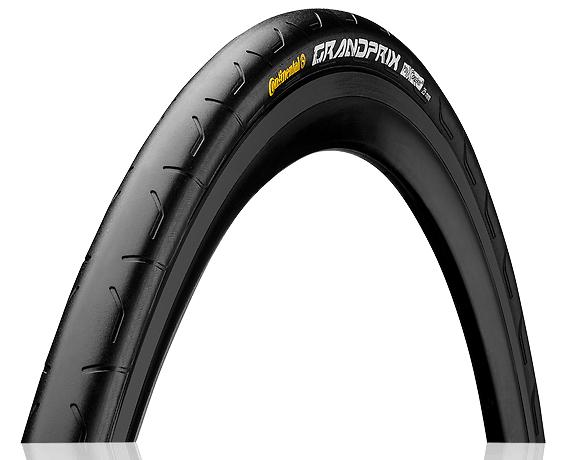
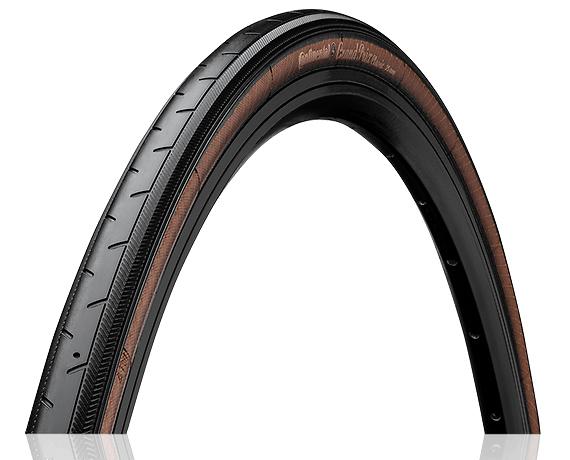





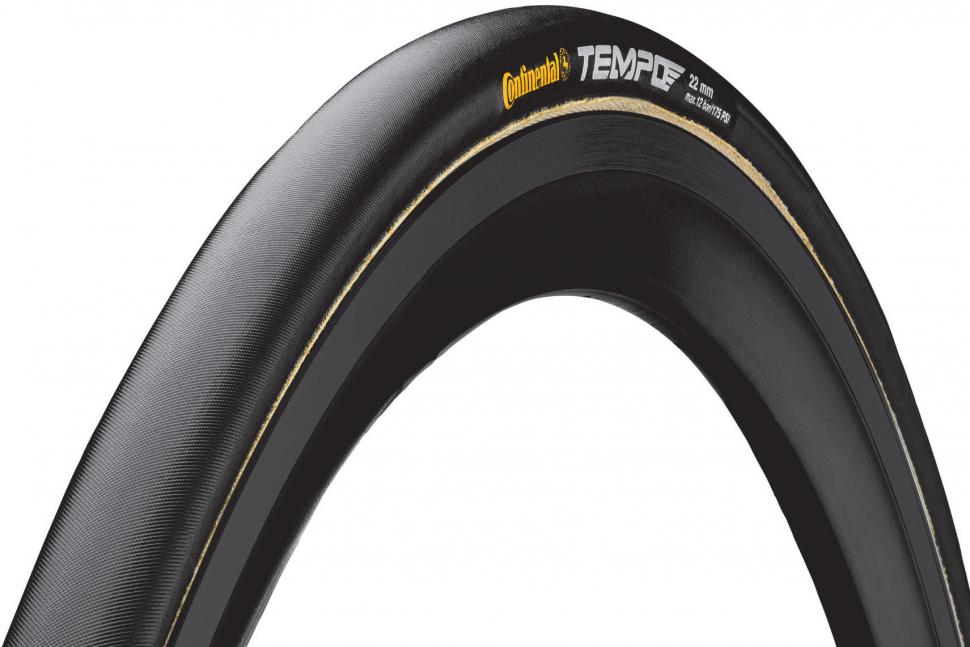
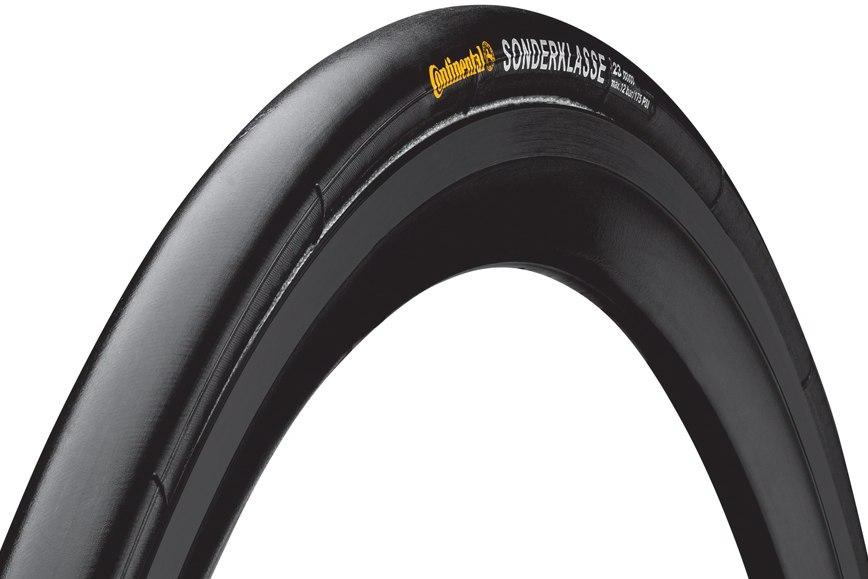
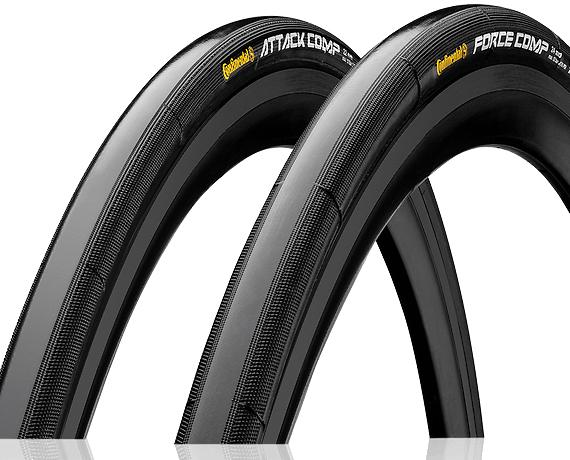
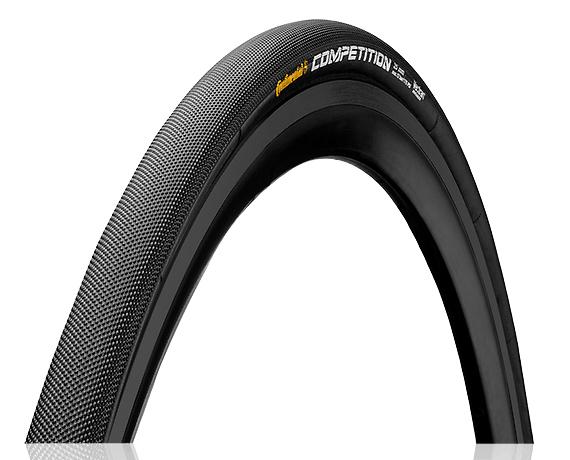

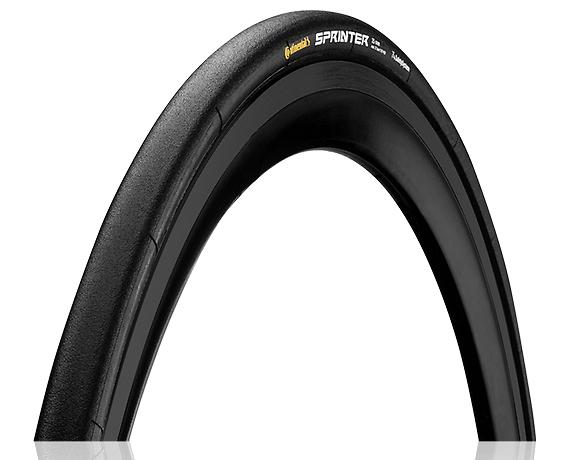
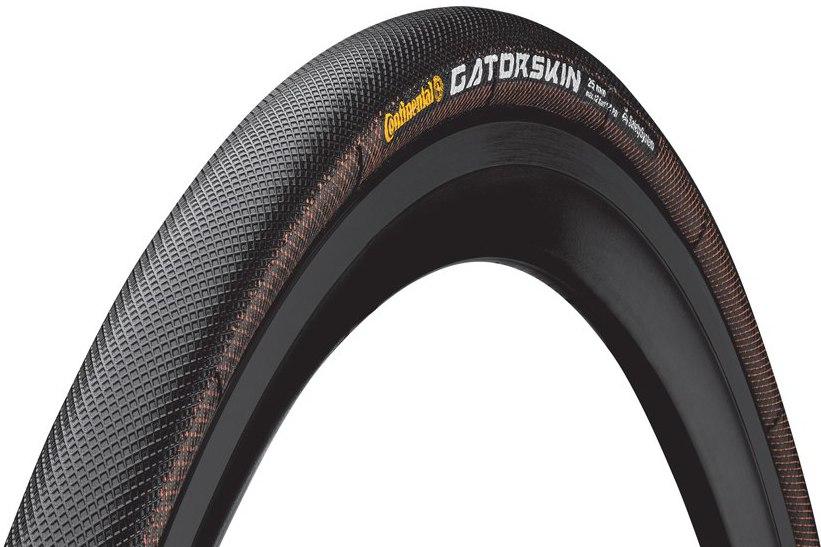
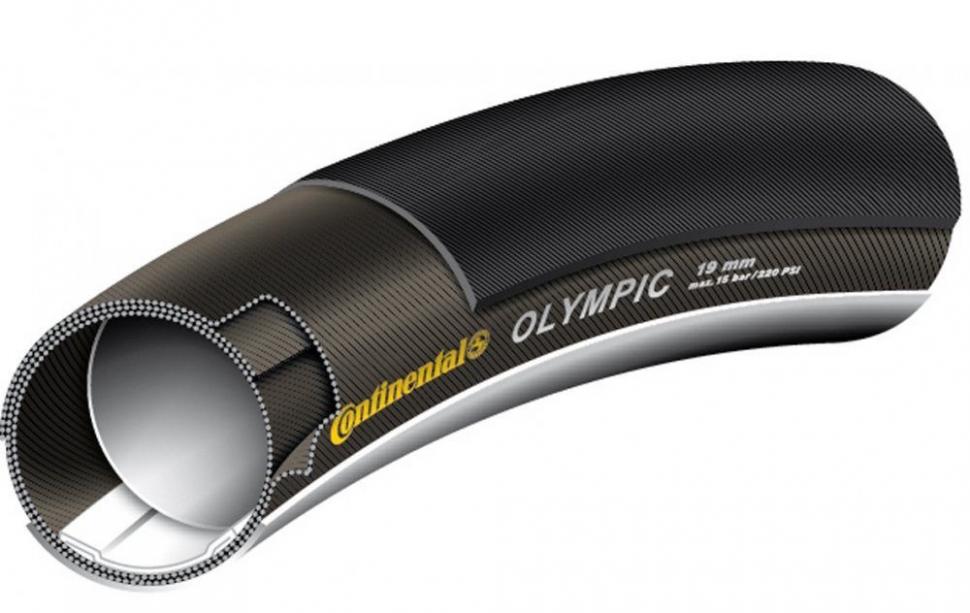
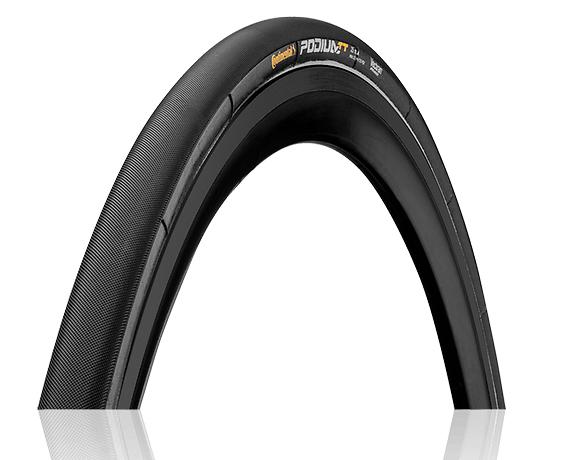
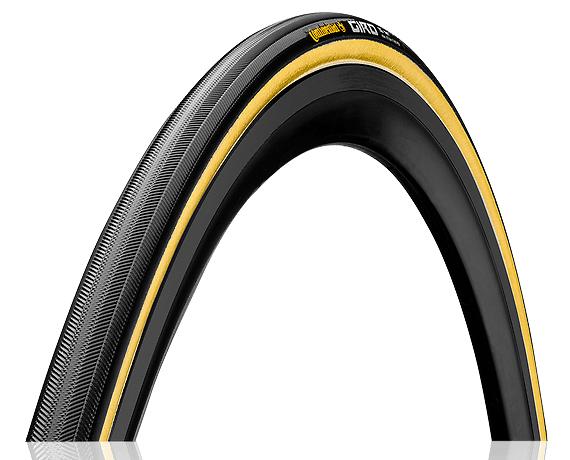
Add new comment
51 comments
I wonder if any readers have come across this problem? The 'gatorskin' layer has detached from the sidewall on my 28mm Continental tyres!
ImageImageImage
Yes, I've seen that happen to quite a few of the gatorskins I've used over the years, I suspect due to extended exposure to sunlight (strong UV here in Australia), weakening the threads
Happens to lots in London too!
Conti launched the Ultra Sport III sometime this or late last year. Can't find any press on it yet, but it's out there.
Just come off a 900 mile, 2 week bikepacking tour in France using Grand Prix GT 28mm and they look like they've hardly been touched. It could be down to the French roads being in such good condition but I was seriously impressed with the performance of the tyres. There didn't seem to be much rolling resistance and grip seemed good going down some of the steeper more technical descents.
Hi guys,
Ollie here from HUNT. Just wanted to pick up on a few of the comments seen here, and apologise for any confusion/lack of clarity on our part! To echo bikerchickie's post, our guidance on using TL tyres only, pertains specifically to the HLW (hookless) rims we offered on some of our carbon disc wheelsets prior to Dec 2017. No alloy or rim-brake wheelsets have ever fallen under this, and since the above date no wheelset in our range at all is hookless. As such, you may use any tyres you wish
Apologies again for any confusion, and hope this helps! Please do get in touch with the customer services team at thechase [at] huntbikewheels.com if you have any further questions or concerns.
Cheers all,
Ollie Gray (Hunt Brand Manager(
No tubeless.
No thanks.
I’ve always gone with the gator hardshells. Pretty bulletproof for general touring and commuting duties. Anyone have experience of the SuperSport Plus tyres? How does the compound and puncture protection compare? They are half the price!
FWIW, the Attack & Force clinchers have (somewhat) recently been updated to 23c and 25c, respectively.
This article contains good design advice. I wish to learn more on how I can improve my designing skills and Im so glad to have bumped in your blog. It given me some great ideas of things to work on about my next biking journey. Thanks for the share!
The (tubular) Competition is... "one of the most popular tyres in the professional peloton, and while the pros get the special Pro Ltd version..." - so, they get a different tyre.
The pro-spec has a latex tube, the retail version is butyl -and much the worse for it. I wasn't aware of this when I fitted them, but won't make the same mistake next time. Who ever thought fitting butyl inside a top-line sew-up was ever the way to go? Pretty poor show from Continental in my opinion.
I have both and the difference is noticeable at same tyre pressures, I use a 27mm Veloflex Vlandaaren on the rear of my carbon rig and a 25mm comp on the front, if I could get a 25mm pro I'd have it in a heartbeat but 23mm are the only ones I got.
Love the veloflex though it's precisely the 300g it states on the tin and precisely 27mm width, with the latex inner it gives a superemely comfortable and indeed fast ride.
I mean, you could always research these things before parting with cash. Ever heard of this website called "Google"?
I checked out Conti's website prior to buying. No mention of it there.
I mean, just sayin', supercilious twat.
No mention of the Sport Contact?
I have them as 26" tyres on my ciommuter and they're fantastic, loads of grip, they last really well and I only really start to get punctures when they are really badly worn.
The 700c versions are available for around £10 at the moment and I'm tempted to try a set in 700x32c on my road bike and see how I get on.
Normally I'm a cheapskate and run 700x28c Michelin Dynamics on the road bike, but recently fitted a 28c Vittoria Randonneur to the rear and didn't find much difference between it and Michelin to be honest.
I tried Gatorskins once and found them so sketchy in the wet that I will never touch them again. A mate of mine absolutely loves them! Tyre choice is so subjective and comparative testing is so expensive for the end-user that it always feels like a big risk to switch from something that works.
My comuter bike (BMC Alpenchallenge) came with Sport Contact IIs, they were great in the summer - fast rolling and only had one puncture. But a nightmare in the winter; the hard compound didn't grip cold, wet Glasgow roads. Stupidly I didn't get around to swiching them for something better and lost the back of my bike on a wet corner - landing on my face and smashing 4 of my teeth.
£5k worth on implants later I upgraded to the Conti GP Urban which uses a much softer rubber compound (pretty much the same as the GP5000) and only comes in 35mm width (conveniently the same as my BMC came with).
They're a huge improvement - the soft rubber sticks to the road in all weathers, rolls fast and I haven't had a single puncture since fitting them (I have picked a few pieces of broken glass out of them which just proved the puncture protection is doing its job).
I might use the Conti speeds again in the summer, but not for another winter commute.
I don't think I'll be buying conti again - they've clearly overcooked their expenditure with marketing and sponsorship, and you can get just as good products from panaracer or vittoria for much less of your slab.
Continental's puncture resistant technology, such as that used in the GatorSkin, is actually made from the same material as their stubborness in regard to tubeless. It's pretty strong stuff.
Ridden on GP4000s for years. Had two side walls fail which has made me question their quality. Hear I'm not the only one to experience problems.
Ridden on GP4000s for years. Had two side walls fail which has made me question their quality. Hear I'm not the only one to experience problems.
Ridden on GP4000s for years. Had two side walls fail which has made me question their quality. Hear I'm not the only one to experience problems.
Ridden on GP4000s for years. Had two side walls fail which has made me question their quality. Hear I'm not the only one to experience problems.
I think the Grant Prix GT is a fabulous tyre, quick and tough enough for winter on all but the worst back lanes.
For summer I go back to GP4000S2's (or tubeless Maxxis Padrones)
Ah you missed out my favourite tyre, Tempo II tubular, it's great for outdoor velodromes and TT's - fantastic tyre. There's also the Sonderklasse II tyre for indoor velodrome use
I appreciate choice, but, man, there's a lot of overlapping product here. Is there really a need for the 4000S II, Supersonic, TT, and Force/Attack combo? Seems to me you could consolidate that to three models, easily, and maybe just two. And is there really a need for the Grand Prix, Grand Prix GT, Grand Sport Race, and Ultra Sport II? That seems about two models more than neccesary to cover the semi-performance segment.
Just re-reading this, and have to agree. Far too much overlap in similar tyres - and too few tubeless. And not only that, they don't seem to produce a road clincher with a file tread. Why? The nearest they have is the commuting Contact Speed folding which has a similar tread to their 'Pro only' tyres.
As good a brand as they are, one feels they're quite conservative with their products.
The last pair of Supersonic 20mm tyres which I bought came up at 23mm and had a very fine tread instead of the totally slick finish. Has anyone else had a similar experience, or can anyone explain why this might be? I wrote to Continental using the contact formula ontheir website but they never bothered to reply (which doesn't make me keen to give them my hard-earned).
The tyres in question were marked "Supersonic" and "20mm", so all I want to know really is if this was a munufactirung mistake or if they have changed the design of the tyres.
I have also tried the very popular GP 4000 SII and, although fast and grippy, I found the puncture protection to be very poor - I would not buy them again because if I want to choose performance at the expense of puncture protection, then I will choose the Supersonics.
I'm guessing the 4 Season is that little bit more expensive because its hand made - most of the other tyres aren't.
Interested to read the spec of the Grand Prix GT, tempted to give those a go.
Currently have some 25mm 4 Seasons and 32mm Gators. Not a fan of the Gators in that size, surprisingly skiddy on manhole covers and cattle grids compared to the GravelKings I have on at the moment.
Too many tyres! That'll teach me for going from a 25mm max rim-brake bike to a disc-equipped that can run 32mm+ under guards.
I really need to try some more Michelin tires. I've had good luck commuting with their Krylion Carbon on my rear wheel. Last tire went over 1,600 miles for me without a flat, though it had plenty of serious-looking cuts. Changed it out becuase it was wearing down pretty bad and the profile was starting to square. BTW, 1,600 miles is quite a bit for me with tires. Typically I'm lucky if a tire gets much over 1,000. Not sure if it's my weight (down to around 88kg's currently) or what, but tires just don't last long for me.
Have tried a few Conti's, and surprisingly the one that has been the most durable for me was the Ultra Sport. Went over 1,800 miles (record for me) before tread started fraying and I replaced it. No flats on it either, though. Could have maybe squeezed another few hundred miles out of it but when I only paid $17 for it it didn't seem worth the risk. Only used it on my front wheel - I've found my best combo for commuting while not feeling like I need to put on different tires for group rides is a thicker, puncture-resistant back tire with a lighter training/racing tire on the front. Tried a GP4-Season on my back wheel one time and barely got 600 miles out of it before tread looked real thin and I started getting flats. Trying a Gatorskin on the rear of my new wheels to see how it goes. Used one several years ago on a hybrid I converted into a drop-bar and wasn't a fan, but want to give it another chance with my lighter body weight/nicer bike/more experience.
The lack of tubeless for Conti is bizarre. It's a deliberate denial and makes no sense to me.
Schwalbe Pro and S-one etc are seriously impressive and must be taking a good chunk of business from them.
I agree GP4S are pricey for pretty average protection, they aren't that fast, grippy or that puncture proof. They are OK but the rest of the manufacturers have caught up and moved on, where as Conti havent changed their tyres in years. For me race tyres run tubeless beats them and gives best of both worlds.
Pages